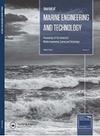基于鲁棒自组织模糊滑模的水下机器人路径跟踪控制
IF 2.6
4区 工程技术
Q1 Engineering
Journal of Marine Engineering and Technology
Pub Date : 2022-09-13
DOI:10.1080/20464177.2022.2120448
引用次数: 5
摘要
一种鲁棒的自组织模糊滑模控制律使自主水下航行器(AUV)在没有时间规范的情况下以恒定速度跟踪预定的平面路径。路径跟踪控制采用了一种智能方法来处理车辆动力学中的各种参数不确定性,并克服了文献中所述的几种路径跟踪控制策略中的严格初步条件约束。鲁棒控制器设计建立在滑模控制理论和模糊逻辑技术的融合之上,并具有调整边界层宽度和命中增益的自适应机制。这种新策略提出了两个不同的调整过程:第一种方法通常使用绝对误差及其导数作为二维模糊逻辑规则结构中的模糊输入变量。在此,在规则库结构中利用偏斜对称性,基于符号距离技术导出单输入模糊变量,极大地减少了二维模糊逻辑规则。由于第二种方法通过使用模糊规则的镜像和Lyapunov方法进行调整,大大减少了规则推断,因此所得到的制导控制律使路径跟随误差轨迹快速收敛到零,同时消除了抖振问题。仿真结果表明了所提出的控制律的有效性和鲁棒性,以实现高精度的良好跟踪性能。本文章由计算机程序翻译,如有差异,请以英文原文为准。
Robust self-organising fuzzy sliding mode-based path-following control for autonomous underwater vehicles
A robust self-organising fuzzy sliding mode control law steers autonomous underwater vehicles (AUVs) to track a predefined planar path at a constant speed without temporal specifications. An intelligent methodology has been adopted for path-following control to handle varying parametric uncertainties in vehicle dynamics and also conquers stringent preliminary condition constraints in several path-following control strategies illustrated in the literature. Robust controller design builds on a fusion of sliding mode control theory and fuzzy logic technique with an adaptation mechanism to tune boundary layer width and hitting gain. This novel strategy proposes two distinct tuning procedures: the first method commonly uses absolute error and their derivative as fuzzy input variables in a two-dimensional fuzzy logic rule structure. Herein, skew symmetry property is utilised in rule base structure to derive a single input fuzzy variable based on the signed distance technique, drastically reducing two-dimensional fuzzy logic rules. Since the second method provides substantial reductions in rule inferences through the use of the fuzzy rule's mirror image and the Lyapunov approach for tuning purposes, the resulting guidance control law yields fast convergence of the path-following error trajectory towards zero along with the elimination of chattering problem. Simulation results illustrate the effectiveness and robustness of the proposed control law to achieve favourable tracking performance with a high accuracy.
求助全文
通过发布文献求助,成功后即可免费获取论文全文。
去求助
来源期刊

Journal of Marine Engineering and Technology
工程技术-工程:海洋
CiteScore
5.20
自引率
0.00%
发文量
0
审稿时长
>12 weeks
期刊介绍:
The Journal of Marine Engineering and Technology will publish papers concerned with scientific and theoretical research applied to all aspects of marine engineering and technology in addition to issues associated with the application of technology in the marine environment. The areas of interest will include:
• Fuel technology and Combustion
• Power and Propulsion Systems
• Noise and vibration
• Offshore and Underwater Technology
• Computing, IT and communication
• Pumping and Pipeline Engineering
• Safety and Environmental Assessment
• Electrical and Electronic Systems and Machines
• Vessel Manoeuvring and Stabilisation
• Tribology and Power Transmission
• Dynamic modelling, System Simulation and Control
• Heat Transfer, Energy Conversion and Use
• Renewable Energy and Sustainability
• Materials and Corrosion
• Heat Engine Development
• Green Shipping
• Hydrography
• Subsea Operations
• Cargo Handling and Containment
• Pollution Reduction
• Navigation
• Vessel Management
• Decommissioning
• Salvage Procedures
• Legislation
• Ship and floating structure design
• Robotics Salvage Procedures
• Structural Integrity Cargo Handling and Containment
• Marine resource and acquisition
• Risk Analysis Robotics
• Maintenance and Inspection Planning Vessel Management
• Marine security
• Risk Analysis
• Legislation
• Underwater Vehicles
• Plant and Equipment
• Structural Integrity
• Installation and Repair
• Plant and Equipment
• Maintenance and Inspection Planning.
 求助内容:
求助内容: 应助结果提醒方式:
应助结果提醒方式:


